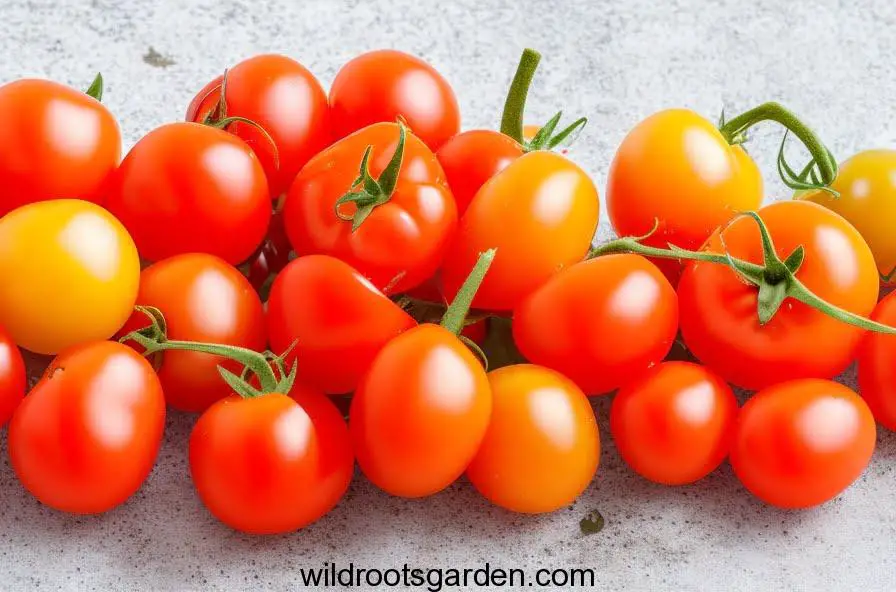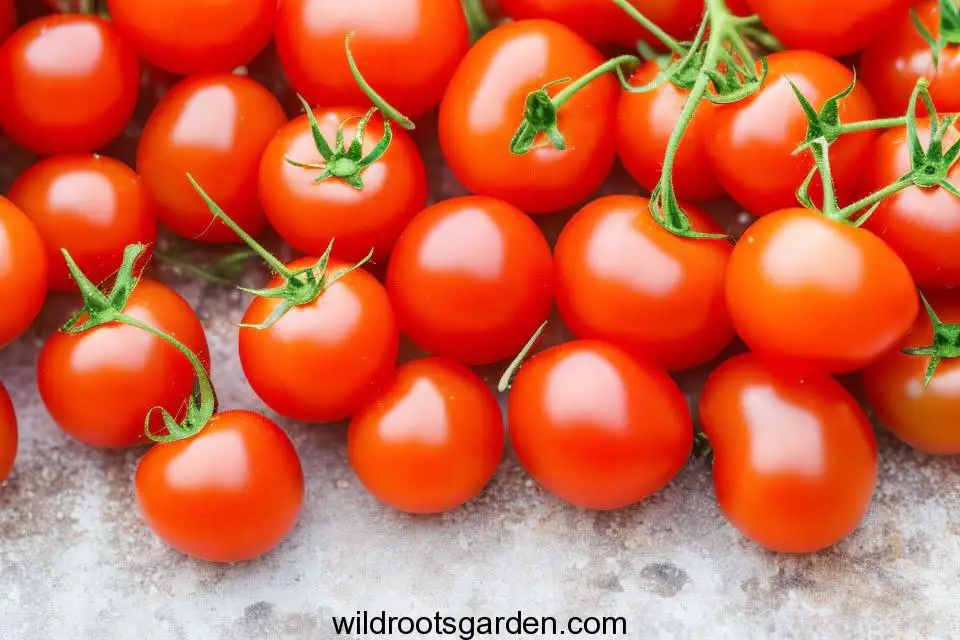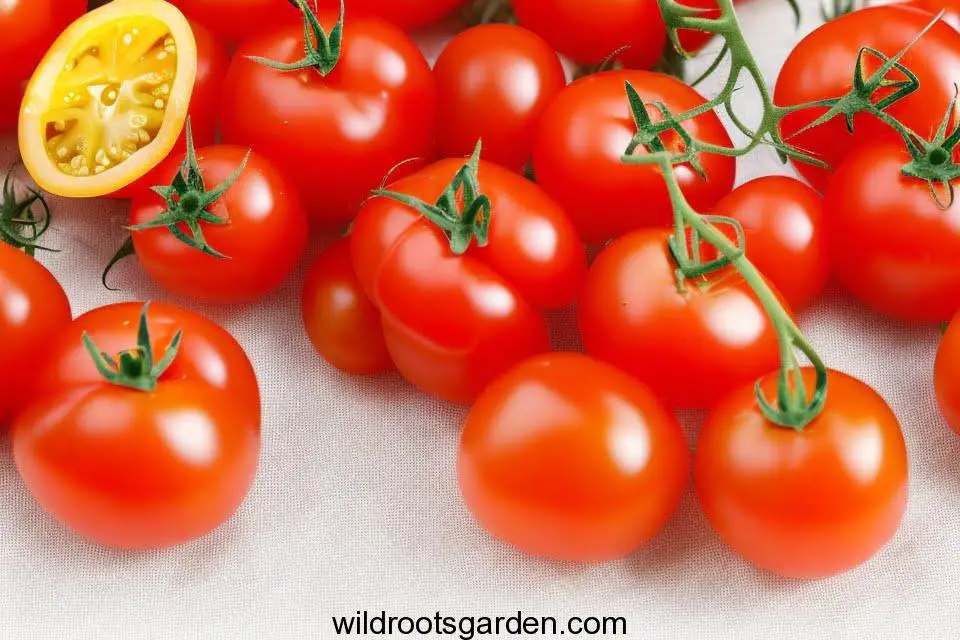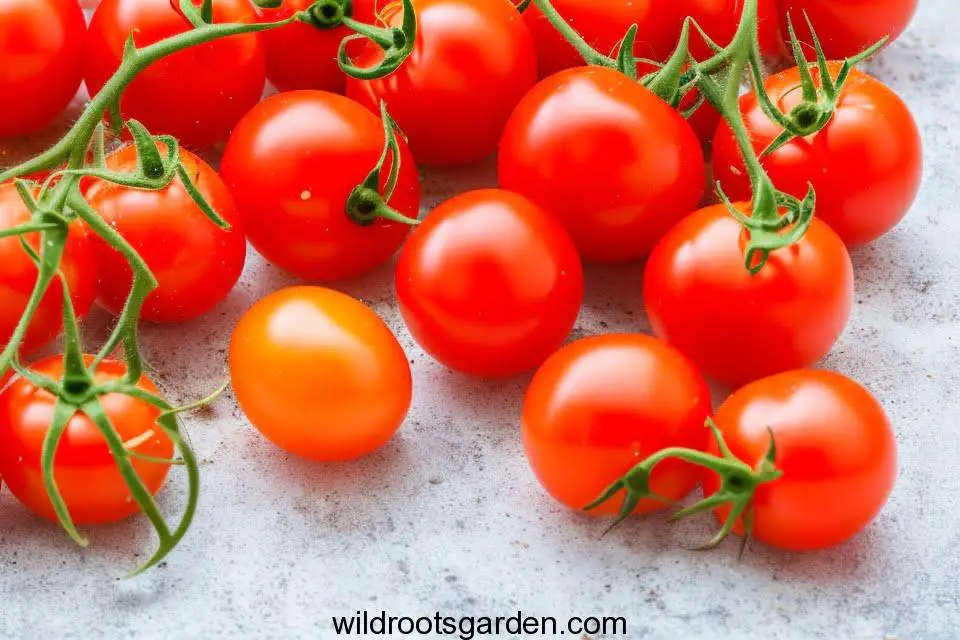Cherry Tomatoes Split After Picking. Cherry tomatoes are delicious tiny flavor explosions that give every dish a hint of sweetness. When you anxiously pull them from the vine only to discover that they have split open, it might be frustrating. One frequent problem that many gardeners and tomato enthusiasts deal with is the phenomenon of cherry tomatoes splitting after picking. This in-depth tutorial will examine the causes of cherry tomatoes breaking after plucking and provide you with advice on how to stop it from happening. So let’s get started!
Why Do Cherry Tomatoes Split After Picking?
Due to a variety of causes—including irregular watering, rapid fruit growth, and certain environmental circumstances—cherry tomatoes split after harvest. Knowing these elements is essential to avoiding cherry tomato splitting and guaranteeing a plentiful crop. Let’s examine each of these aspects more closely and how they affect this problem.

Inconsistent Watering
Cherry tomatoes need even and constant moisture levels to thrive healthily. The tomatoes’ skins swiftly enlarge when the soil becomes dry and is then abruptly heavily watered. This happens when the soil is dry for a while. This quick expansion may split apart. Maintaining a regular watering plan and making sure the soil is consistently moist throughout the growing season are crucial to prevent this.
Rapid Fruit Growth
Cherry tomatoes are renowned for their fast growth, and the development of their fruits can occasionally exceed that of their skins. As tomatoes grow quickly, their skins might not have enough time to stretch and become larger, which leads to splitting. To reduce the chance of splitting, it’s crucial to regularly watch the development of your cherry tomatoes and harvest them before they get too ripe.
Environmental Conditions
Cherry tomato splitting is significantly influenced by environmental factors. Temperature and humidity changes can stress fruit, which can result in splitting. A lot of heat, a lot of humidity, or a lot of rain can all contribute to this problem. We may take precautions to safeguard our cherry tomatoes even though we have no control over the weather.

Tips to Prevent Cherry Tomatoes from Splitting
Now that we know why cherry tomatoes split after plucking, let’s look at some practical advice to avoid this problem and guarantee a successful harvest.
1. Consistent Watering Schedule
Keep your cherry tomato plants’ watering regimen consistent. To give the roots a consistent supply of moisture, water thoroughly and evenly. Avoid overwatering because it might cause root rot and other issues. The soil’s temperature can be controlled and moisture retained by mulching the area around the plants.
2. Harvest at the Right Time
Keep a tight eye on your cherry tomatoes and pick them when they are ready. Waiting until they are fully ripe on the vine will increase the likelihood that they may split. Instead, pick them when they are just slightly underripe and let them finish ripening inside. Your harvested tomatoes will have a longer shelf life and less likelihood of splitting if you do this.
3. Provide Shade and Protection
Give your cherry tomato plants shade and protection during times of extreme heat or heavy rain. To protect the plants from excessive sun or rain, you might build temporary coverings or use shade cloth. This will lessen stress on the fruit by regulating the temperature and humidity around the plants.

4. Improve Soil Quality
Make sure the cherry tomato plants are planted in organically rich, well-draining soil. A properly prepared soil with sufficient drainage will aid in avoiding wet circumstances that could cause splitting. To increase the soil’s fertility and structure, think about incorporating compost or other organic amendments.
5. Prune Wisely
Your cherry tomato plants’ pruning can improve ventilation and lower the chance of fungus illnesses. Also, it enables the plants to concentrate their efforts on making high-quality fruit. Avoid over-pruning, though, since it might expose the fruit to direct sunlight, raising the likelihood of splitting. To keep a plant healthy and prolific, strike the appropriate balance and prune only when necessary.
6. Use Mulch
For the area around your cherry tomato plants, spread an organic mulch. Mulch inhibits weed development, controls soil temperature, and aids in soil moisture retention. Also, it serves as a barrier to shield the plants from soil-borne diseases that could splash onto them during heavy rain. Straw, wood chips, or compost are all wonderful options for organic mulch.

FAQs about Cherry Tomatoes Splitting After Picking
FAQ 1: Why do cherry tomatoes split?
Cherry tomatoes split due to inconsistent watering, rapid fruit growth, and certain environmental conditions. Inconsistent watering causes the tomatoes to absorb water rapidly, leading to quick expansion and eventual splitting. Rapid fruit growth can outpace the development of the skins, causing them to split. Environmental factors like temperature fluctuations, excessive heat, high humidity, or heavy rainfall can also contribute to the problem.
FAQ 2: How can I prevent cherry tomatoes from splitting?
To prevent cherry tomatoes from splitting, maintain a consistent watering schedule, harvest them at the right time, provide shade and protection during extreme weather, improve soil quality, prune wisely, and use organic mulch around the plants.
FAQ 3: Can I still eat cherry tomatoes that have split?
Yes, you can still eat cherry tomatoes that have split. However, the split areas are more susceptible to spoilage, so it is best to consume them as soon as possible. Use them in salads, sauces, or other recipes where appearance is less important.
FAQ 4: Are there any cherry tomato varieties less prone to splitting?
While all cherry tomato varieties can potentially split, some are more prone to splitting than others. Varieties with thicker skins and slower growth rates are generally less likely to split. Examples include ‘Sun Gold,’ ‘Black Cherry,’ and ‘Sweet 100.’
FAQ 5: Can I use cracked cherry tomatoes for canning?
It is not recommended to use cracked cherry tomatoes for canning. The cracks can compromise the quality and safety of the canned product. It is best to use undamaged tomatoes for canning to ensure proper sealing and preservation.
FAQ 6: Are there any remedies for split cherry tomatoes?
Unfortunately, there are no remedies for split cherry tomatoes. Once they have split, the best course of action is to use them immediately or discard them if they show signs of spoilage.
Conclusion
Gardeners may find it frustrating when cherry tomatoes split after being picked, but by using the proper methods and preventative measures, you may reduce the likelihood of this happening. It is crucial to follow best practices such as regular watering, timely harvesting, environmental preservation, soil enhancement, prudent trimming, and the application of organic mulch. You can have a plentiful harvest of lovely, unbroken cherry tomatoes by adhering to these suggestions and comprehending the causes of splitting. Enjoy your garden!

